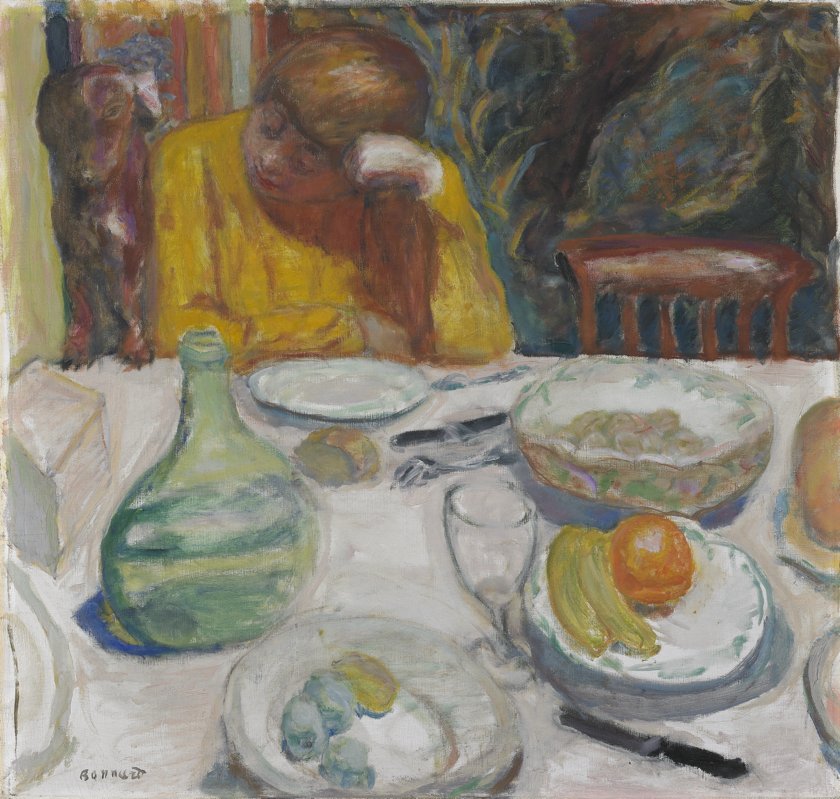Bonnard – La carafe provençale

Pierre Bonnard, La carafe provençale (Marthe Bonnard et son chien Ubu), 1915
Kunst Museum Winterthur, Hahnloser/Jaeggli Stiftung
Foto: Reto Pedrini, Zürich
Around 1910, Bonnard began to enrich his pictorial world with a series of everyday scenes. As with the nudes, also these motifs derived from his private surroundings, and so it is usually his mistress and later wife Marthe who appears as a figure in these works.
With these everyday scenes, which also include La carafe provençale, Bonnard broke with the conventions of the genre, as they are neither pure still lifes nor do they focus on the impressionistic capture of a luminous atmosphere – rather a little of both. The artist, who came from the world of posters and, like many of his contemporaries, was inspired by the two-dimensional style of Japanese printmaking, transferred his artistic origins to his actual environment. The almost square picture is divided graphically and flatly into individual fields that make up the basic composition: the table at the bottom, the woman and dog at the top left and the chair on the right. The objects are then arranged on the white tablecloth; although taken from reality, they are arranged in an unmistakably artistic manner. Bonnard's art is an oscillation between life and painting. This can also be seen in the figure and the dog, as we know who both are: Marthe and their dog, Ubu. However, this is not about an individual portrait; like the other motifs, they are also part of the overall composition, blending harmoniously into the picture's four colours and form.
Marthe, the artist's partner, suffered from physical and psychological problems, which made her increasingly afraid of people and did not always make living together easy. In classical iconography, the supported head is a symbol of melancholy, and it cannot be ruled out that Bonnard gave her this symbol in this sense. Despite its bright colours, the painting was said to have a certain melancholy. The fact that it was painted in the middle of the First World War and that the couple's isolation was also politically reinforced lends the seemingly harmless and colourful scene an unexpected seriousness and gravity.


